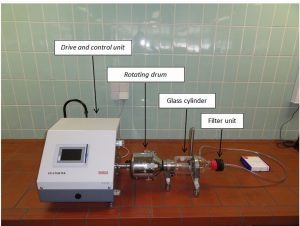Dust Emission from Pesticide Treated Seeds During Seed Drilling
Dressing seeds with pesticides is a widespread and effective way to control pests using smaller doses with potentially less harmful side effects. The technology also makes it possible to combine different applications into only one sowing procedure, helping to reduce the use of fuel, the risks of soil erosion and compression, and thus assisting low intensity farming practices and an integrated pest management policy. The main disadvantages of this technique are that residues of systemic pesticides can be present in the guttated water, plant pollen and nectar of seed-dressed plants and that abraded seed particles can be emitted to the environment during sowing. In the last few years, this emission has resulted in bee losses in several countries and contamination of surface water, among others. The main factors affecting the risk from dust drift are the seed treatment quality, the seed drill technology and the environmental conditions.
This review article presents a summary of the latest information on the phenomenon of emission of dust from pesticide seed dressing during sowing and the consequences thereof.
This is an abstract of the full article published in: Outlooks on Pest Management – October 2015 issue.
The full text of this article is available to subscribers of Outlooks on Pest Management.
Non-subcribers may buy & download full text article.
Authors: David Nuyttens – Institute for Agricultural and Fisheries Research (ILVO), Technology and Food Science Unit, Agricultural Engineering, Burg. van Gansberghelaan 115, bus 1, 9820 Merelbeke, Belgium.
Pieter Verboven – BIOSYST-MeBioS, KU Leuven, Willem de Croylaan 42, 3001 Leuven, Belgium.
Category: Agriculture











